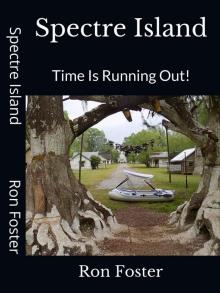 Spectre Island- Time Is Running Out!
Spectre Island- Time Is Running Out! Apocalyptic Apothecary
Apocalyptic Apothecary Our End Of The Line
Our End Of The Line Fades The Light: The Prepper Reconstruction
Fades The Light: The Prepper Reconstruction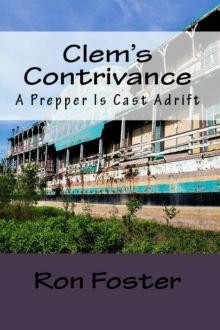 Clem's Contrivance: Terrorist Fiction In The Deep South (The Apocalyptic Rifle Book 1)
Clem's Contrivance: Terrorist Fiction In The Deep South (The Apocalyptic Rifle Book 1) Diary Of A Kudzu Salesman: Survival And Recovery After The Electrical Grid Collapse (Prepper Reconstruction Book 2)
Diary Of A Kudzu Salesman: Survival And Recovery After The Electrical Grid Collapse (Prepper Reconstruction Book 2) The Ridiculously Simple Survival Book
The Ridiculously Simple Survival Book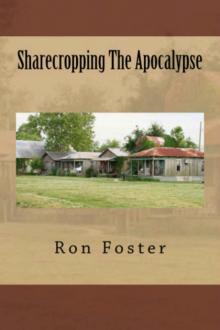 Sharecropping The Apocalypse: A Prepper is Cast Adrift
Sharecropping The Apocalypse: A Prepper is Cast Adrift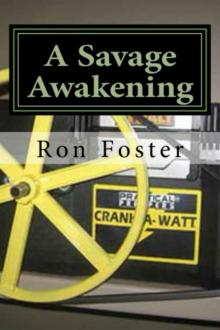 The Savage Awakening (A preppers Perspective)
The Savage Awakening (A preppers Perspective) The Great Unraveling (A Preppers Perspective Book 1)
The Great Unraveling (A Preppers Perspective Book 1) An Old Man And His Axe: A Prepper fiction book of survival in an EMP grid down post apocalyptic world (Old Preppers Die Hard 1)
An Old Man And His Axe: A Prepper fiction book of survival in an EMP grid down post apocalyptic world (Old Preppers Die Hard 1) Shadows Of Sanity And Survival (Old Preppers Die Hard Book 3)
Shadows Of Sanity And Survival (Old Preppers Die Hard Book 3) The Work Of The Dead: A Post Apocalyptic Prepper Fiction Series (Aftermath Survival Book 1)
The Work Of The Dead: A Post Apocalyptic Prepper Fiction Series (Aftermath Survival Book 1) The Preppers Lament
The Preppers Lament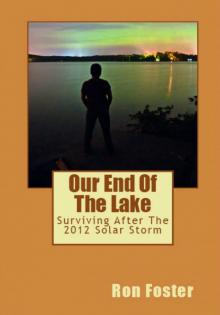 Our End Of The Lake: Surviving After The 2012 Solar Storm (Prepper Trilogy)
Our End Of The Lake: Surviving After The 2012 Solar Storm (Prepper Trilogy)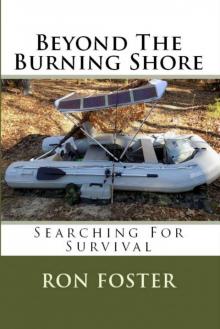 Beyond The Burning Shore: Searching For Survival
Beyond The Burning Shore: Searching For Survival Bug Out Boat Survival: The Post Apocalyptic Survival Trailer Pod (Aftermath Survival Book 3)
Bug Out Boat Survival: The Post Apocalyptic Survival Trailer Pod (Aftermath Survival Book 3) Burning Skillet: Southern Fried Infrastructure (Grid Down Prepper Up Book 2)
Burning Skillet: Southern Fried Infrastructure (Grid Down Prepper Up Book 2) The Solitary Man’s Refuge
The Solitary Man’s Refuge A Pox Upon Us
A Pox Upon Us Smoking Skillet
Smoking Skillet Smoking Skillet: A Recipe For Societal Collapse
Smoking Skillet: A Recipe For Societal Collapse Empty Aisles & Empty Hearts (Preppers Perspective Book 3)
Empty Aisles & Empty Hearts (Preppers Perspective Book 3)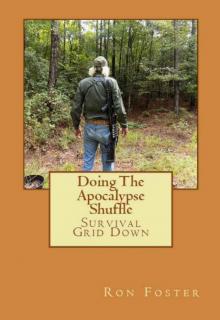 Doing The Apocalypse Shuffle: Southern Prepper Adventure Fiction of Survival Grid Down (Old Preppers Die Hard Book 2)
Doing The Apocalypse Shuffle: Southern Prepper Adventure Fiction of Survival Grid Down (Old Preppers Die Hard Book 2)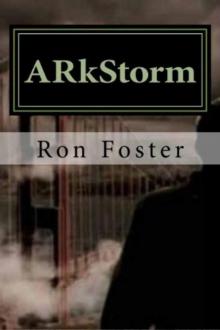 ARkStorm: Surviving A Flood Of Biblical Proportions
ARkStorm: Surviving A Flood Of Biblical Proportions